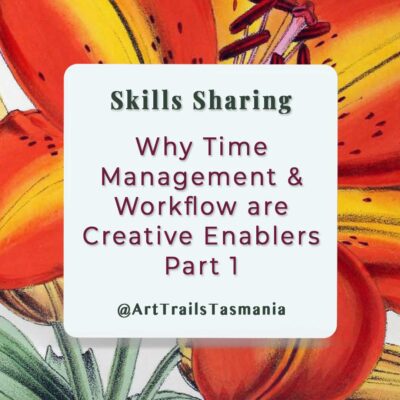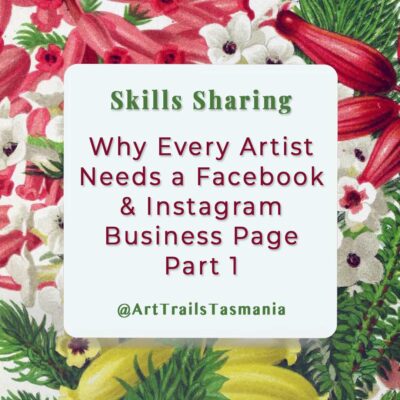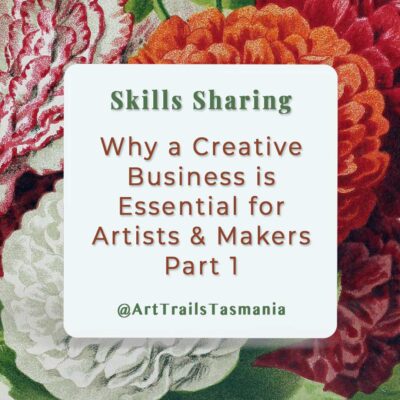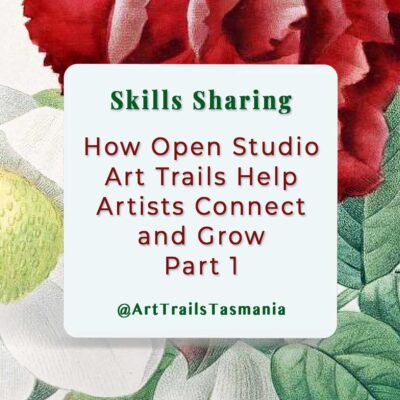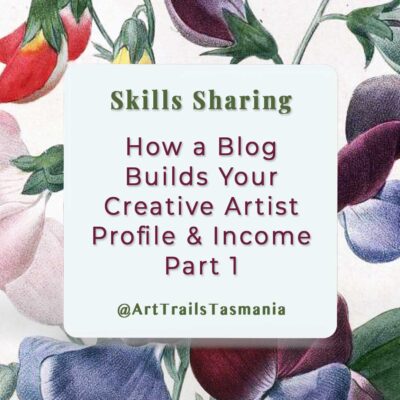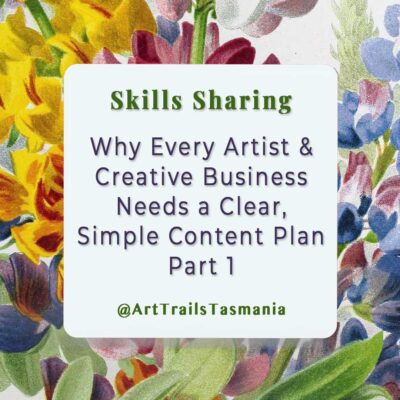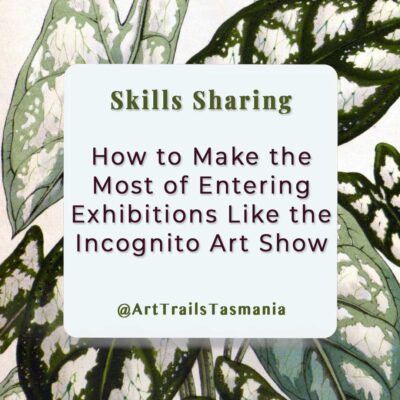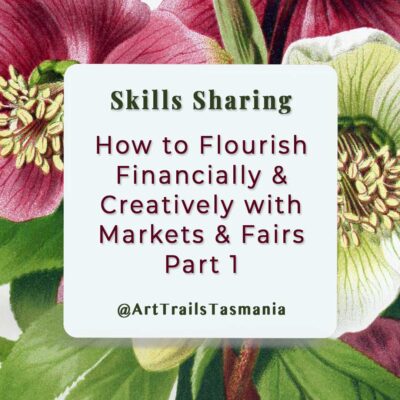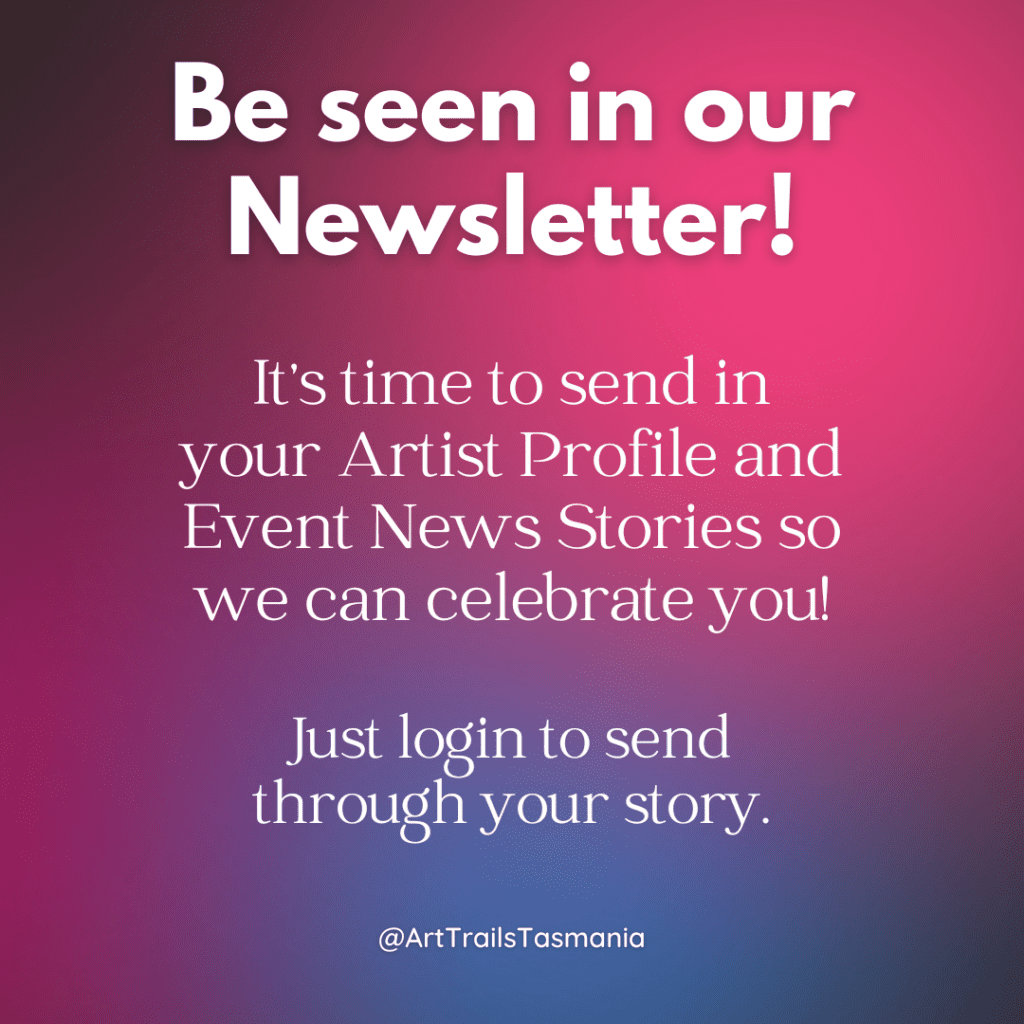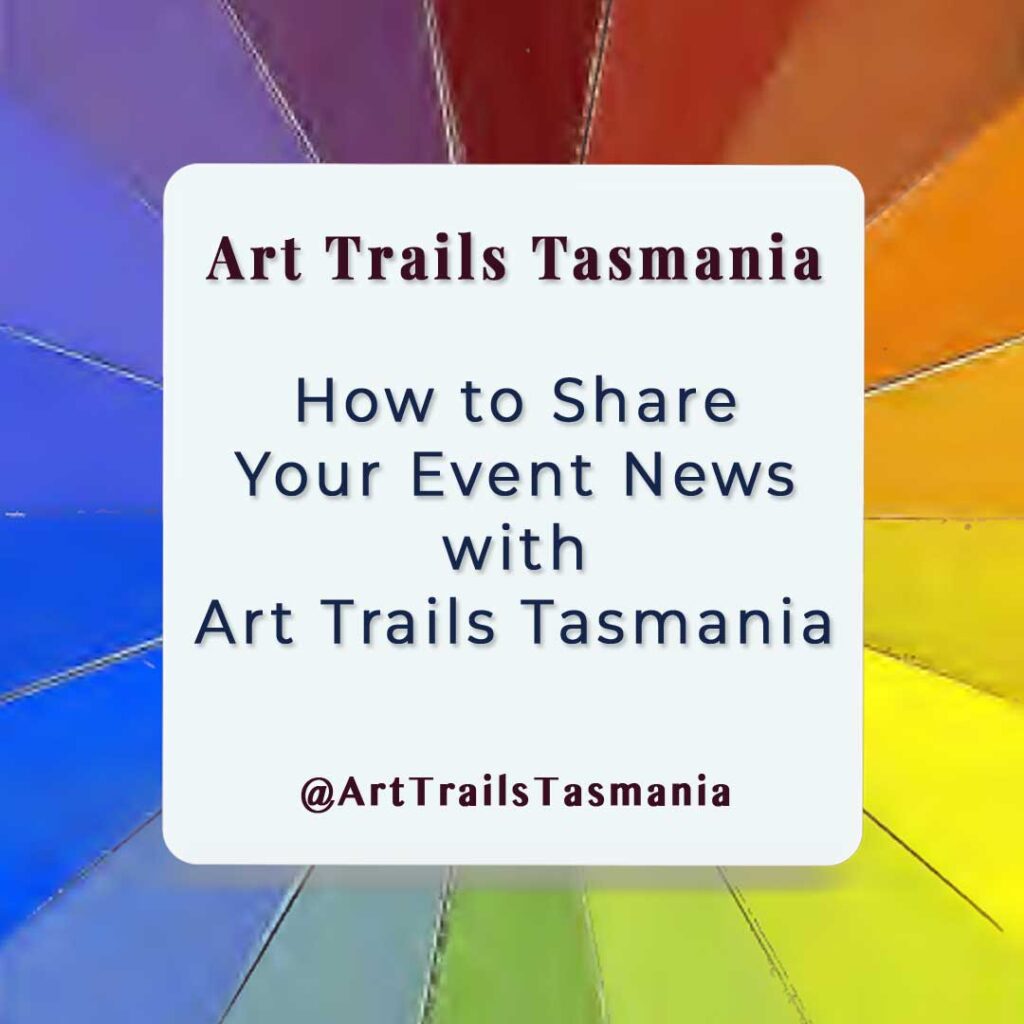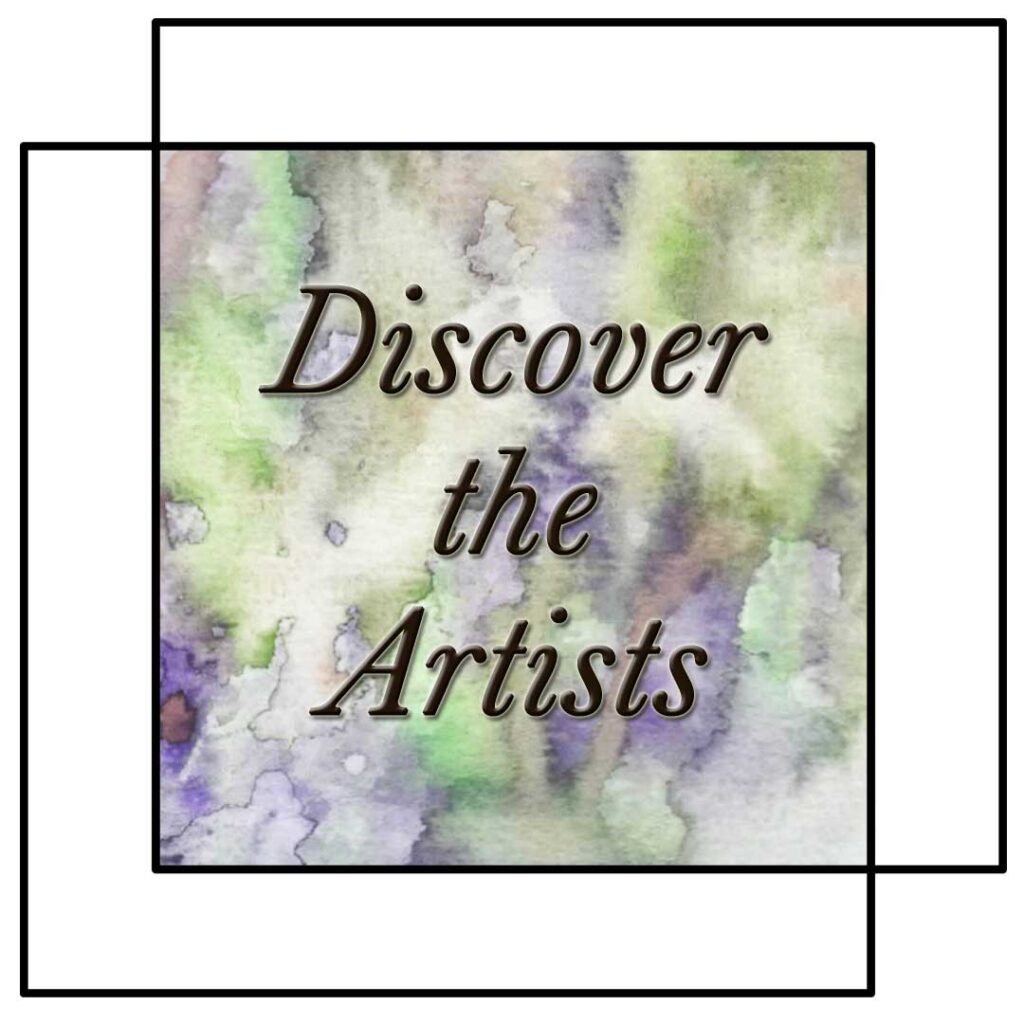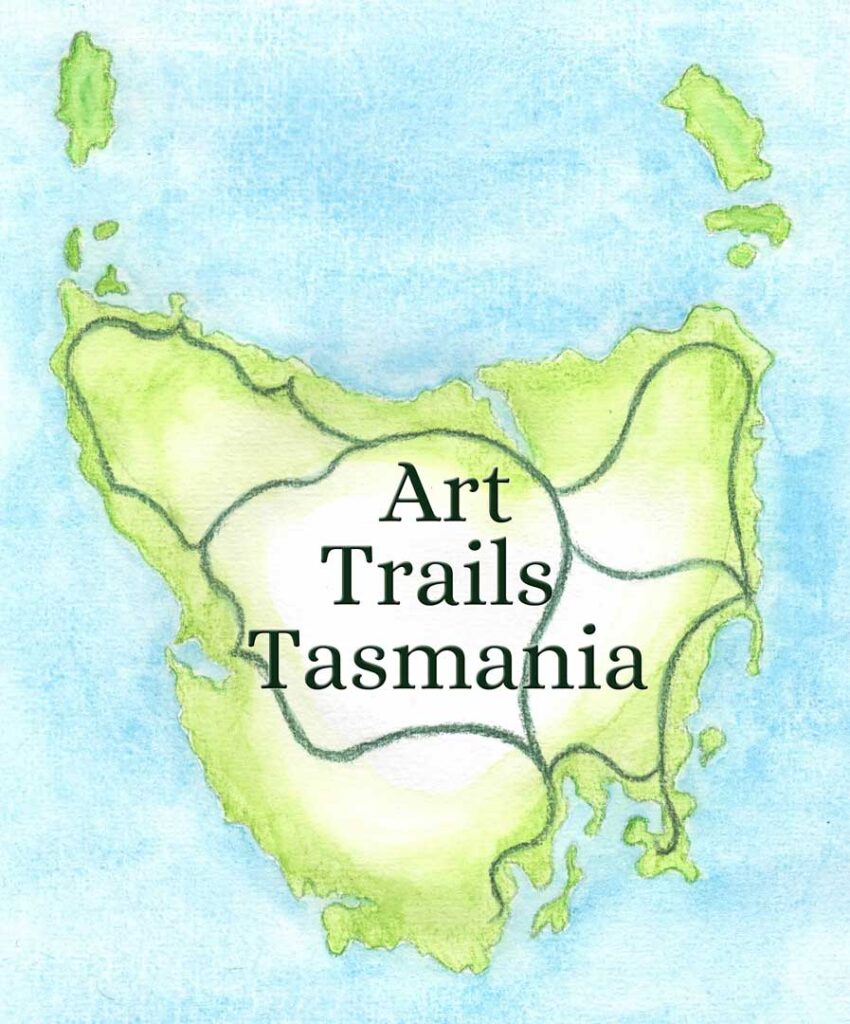Using Facebook to Grow Your Artist Profile
I’ve had to figure out how to make friends with Facebook so I can use it to promote my initial art exhibitions during Covid.
The lockdowns etc meant that I needed to learn how to get this project of mine up and going online rather than in person.
I was at the place of thinking Facebook was just not meant for small creative businesses, and truth be told, it isn’t. Facebook is there for Facebook.
It isn’t personal, it isn’t really professional either, it’s just the reality of the tool, the social media platform that it is. Just as Instagram is.
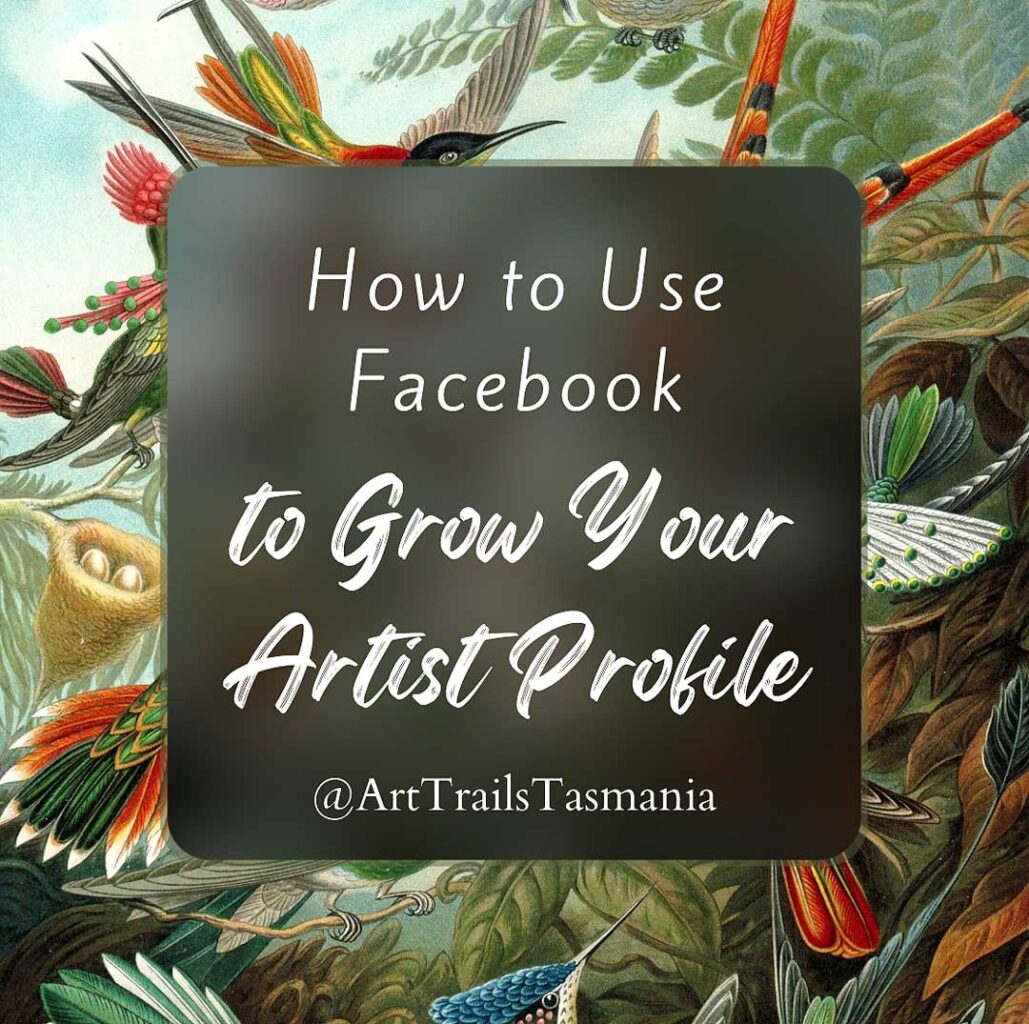
Finding Paths to Connect with Artists
I needed to find paths to connections with my artists, had to make a decision about which social media platform to start with, change my attitudes to being on the socials and learn how to work with it.
Facebook was the platform I initially chose to start with, to focus on because I could easily have working links in each post and I could readily share other pages or people’s posts. I still don’t know how to share posts on Instagram, I know it must be possible because others seem to be doing it. Another lesson for another time.
Happily, I made friends with Facebook and have been able to consistently and progressively grow my presence there for Art Trails Tasmania. Even better, I’ve also been making friends with those who I initially only met via Facebook.
5 Tips for How to Make Friends with Facebook to Grow Your Artist Profile
So I thought it would be a useful thing to share here some of the lessons I’ve learnt in recent years about growing your artist profile/business on Facebook, letting you have the opportunity to figure out what’s worth trying and if you’d like to tweak anything.
1. Have the Right Attitude Towards Facebook
This was probably my biggest shift, deciding to stop sabotaging myself with my attitude to Facebook and allow it to be itself. We all know Facebook can be a bugger to use, inconsistent, contrary, frustrating and constantly changing the goal posts with the expectation that we all have the time and motivation (and funding) to learn its new ways.
So why hold onto that? We all have failings. Do we always need to be complaining and focusing on them, limiting ourselves by that focus?
Facebook is Like a Teenager
Facebook can behave like a teenager, sometimes deeply frustating, sometimes giving you hope and joy for the future.
Once I got out of my own way about not liking Facebook, for accepting that it can be crap, I found working with it a heap easier.
Is Your Attitude Helping or Hindering You?
So what is your attitude towards Facebook? Is it helping or hindering you?
Now when Facebook is being challenging and wasting my time I stop. I close the site and leave to do something more productive. There are ALWAYS loads of things for me to do.
By giving Facebook time to have its sulk and NOT take that personally, just see it as a transitory Facebook thing, I’m being so much more productive with it.
Sometimes I’ll google what do to with the problem and have discovered that Facebook’s been attacked, it’s having a melt down because of something that’s happened in the USA, or it’s having a fight with the Australian government over ethics. It can just come down to Facebook tripping over itself. It isn’t about me, or you, at all.
2. Create Your Work Around Copyright Concerns
Many artists have significant and appropariate concerns about the copyright issues with Facebook.
Facebook’s own terms and condition gives you ample reason to be upset and concerned. With the approach that everything published on their platform automatically comes under their own copyright this USA corporation presents itself as a theif.
So what to do about that? Simply choose what you publish.
If you’re going to publish on Facebook (or Instagram) your orginal art work do it consciously knowing that a perfect flat lay, up close image showing all the details is at significant risk – from Facebook itself as well as from other individuals and businesses of being ripped off.
An alternative is to show images that can’t be so easily ripped.
Think about putting objects across the peice, eg. showing the artwork at an angle and having paint brushes etc over it, and put your name clearly on it that works for you. This demonstrates your work to your followers but gives nothing away otherwise. It is all in how you present it.
3. Good Manners Make the World Go Around
I’m a big proponent of the adage that good manners make the world go round. And I think this is especially true on the socials.
Bad manners, bad behaviour on the social platforms causes a great deal of upset, just as in real life.
So if you are always playing nice on the socials you are spreading goodwill and that is appealing to followers.
If you’re leaving comments on other people’s post say something kind, constructive or helpful.
Saying Thank You for Having Your Posts Shared with Likes and Comments = Good Manners
If you’ve made content on for your page and it is shared, have the good manners to go over to the other page that’s promoting your work and like and comment (yes, both) on the post. It will encourage them to look at and share more of your work AND Facebook rewards both pages for the original content and the shared content that BOTH attrack likes and comments.
Some think that responding only to the comments made on their posts is enough, it’s only good for your post and it wastes an opportunity for Facebook brownie points. And crucially it doesn’t nurture your relationships with those supporting you and sharing your work to their followers.
You can easily see if a post is shared by seeing the number next to the right hand arrow alongside the Like and Comment icons. Click on the linked number and you’ll see the public pages that are sharing your work. It’s really easy then to like and comment on their post. Of course it is also easy to Follow them too, another action Facebook rewards.
Supporting and celebrating each other on Facebook looks after all involved.
Facebook Rewards Good Manners
Good manners are rewarded by Facebook. This includes liking each other’s pages. It is really simple. It ticks Facebooks boxes for engaging content and Facebook rewards those publishing engaging content. They’ll then show your work to more people. And that’s the name of the game with Facebook – tick their boxes and they show your work to more people.
Plus, commenting, liking and sharing posts is a lovely way to engage and connect with your online, your digital community.
What Standards of Behaviour Do You Want to Enable and Allow?
It’s also important to choose what standards you want to accept online.
I’ve had a couple of smart alec comments made towards my artists that I’ve had to make decisions about how to respond to them. My initial response is to delete the comment and block the thoughtless person. I decided it was better for everyone looking to see that small behaviour is addressed politely, that boundaries are set and my artists can see that I’m stepping up for them.
In each instance the smart alec stepped back, apologised and played nice. If they had decided to continue to push the boundaries I would have banned them.
For me, playing nice, having good manners and being kind and supportive is a far more enjoyable way to live.
4. Decide on Personal or Page Profile
Many of us start with Facebook with a personal page where we connect with family, friends and share personal life. Given how precious our family members, friends and personal informaton is we need our personal pages set to Private. This is why we shouldn’t be using our personal pages to support our creative businesses, our Artist Profiles.
Using Page Profiles for Your Artist Profile on Facebook
Whereas the Page profiles have a range of about six options, including Artist, Band or Public Figure. (note that Facebook does change this list periodically so adapt as needed).
This list also includes Local Business or Place (bricks and mortor, eg a gallery, cafe or shop), Company, Organisation or Institution (eg. a small business), Brand or Product (suited more for the likes of Revlon ), Entertainment as well as Cause or Community (think art group maybe?).
If you’re wanting to set up an Artist Profile the Artist, Band or Public Figure option could work well.
Using a Page option protects your personal information, let’s you share your posts on a public level, including being shared (and really, having your posts shared by others is a wonderful compliment and excellent marketing result on your part), boost posts and run advertising campaigns, build up with a following and interaction on other pages with a simple click on your profile image over to your page.
You can setup events, galleries, shops and more with a page.
Most importantly, you can setup your own vanity URL (personalised for your Facebook page, eg. www.facebook.com/ArtTrailsTasmania that makes it easier to find your page and remember your name. Instead of something randomly made up by Facebook like www.facebook.com/profile.php?id=100063645848734 – where’s the value in that URL? It is a crap one to be sharing with others, especially as it donesn’t even have your name in it. (The URL is what shows at the top of a website page, it’s the address.)
You want to have the same Vanity URL name for Facebook, Instagram and other online profiles to make it easy for your followers, customers to find you. I’ll be creating a How to Guide with Planning tools on this for the membership hub.
5. Have Images That Work for Your on Facebook
Posts that have images get far more attention on and by Facebook than text only posts.
I can’t see any value in having a text only post. If you’re going to be spending time on developng content for your Artrist Profile page then do what works rather than wasting your effort (this was part of my own revelations when I decided to change my attitude towards Facebook – do what’s useful and productive, leave the rest behind).
Then make your images work for you.
This means having a size that works. Because I often use the scheduling tool at the backend of Facebook (at time of writing called Meta Business, although liable to change its name) to schedule for both Facebook and Instagram I’ve been using the Instagram image size of 1080 x 1080.
And I’ll confess, my recent discovery of Canva has made me a tad lazy. I use the free option for Canva (haven’t seen the value in their pro monthly costs), work with their Instagram Post images and edit to my heart’s content then save to a a folder on my computer for later use. Do note that Canva has some odd names for things, you’ll find the ability to save to your computer under Share>Download.
Facebook Image Dimensions
I’m pretty sure Facebook would like me to be resizing the dimensions of the images for posts just for it but I feel it is easier for me to stick with the IG square format.
When you’re setting up your Facebook page you’ll need the appropriate image sizes for the page image (that big one at the top of the page) and the logo image (the one they show as a circle that appears next to your comments and posts etc).
You’ll also need to use their preferred image dimensions when you’re setting up an event.
I’ve learnt to do a google search with “facebook image sizes 2023” – edit the year to make it current and check out posts by folk like Hubspot to find out what the current sizes are. (Don’t bother getting upset about the changes, it’s a waste of energy.)
Using Your Own Images for Events and Blogs
I find how Facebook has recently been showing blog posts and events to be inadequate. So I just use my own image (that’s the 1080 x 1080 size) and link to the blog post or event info from my page.
I upload the image and put the link in the post.
What’s also really important is to:
- repeat the event details in the written part of the post as well as have it showing in the event’s image
- make sure it is easy to see the information in the image as they are seen on small phone screen sizes. I’ve seen some images with way too much details and impossible to read on the phone and no details in the written part of the post.
Business Tasmania and Free Digital Coaching
As soon as you go searching online about how to make Facebook work for your creative business, your Artist Profile in effect, you’ll find thousands of tips. Shifting through them can take a while and you’re bound to find some gems and some fool’s gold.
Fortunately, the state government has Business Tasmania with a range of very useful services for us. You don’t even have to have a registered business to access their services.
They also have setup Free Digital Coaching to help you figure out what you want and how to go about it. The coaching is a one to one free service available through ALL of Tasmania, so not just Hobart.
When I spoke to one of their team members I found her very friendly, willing to help and understanding of where artists are coming from.
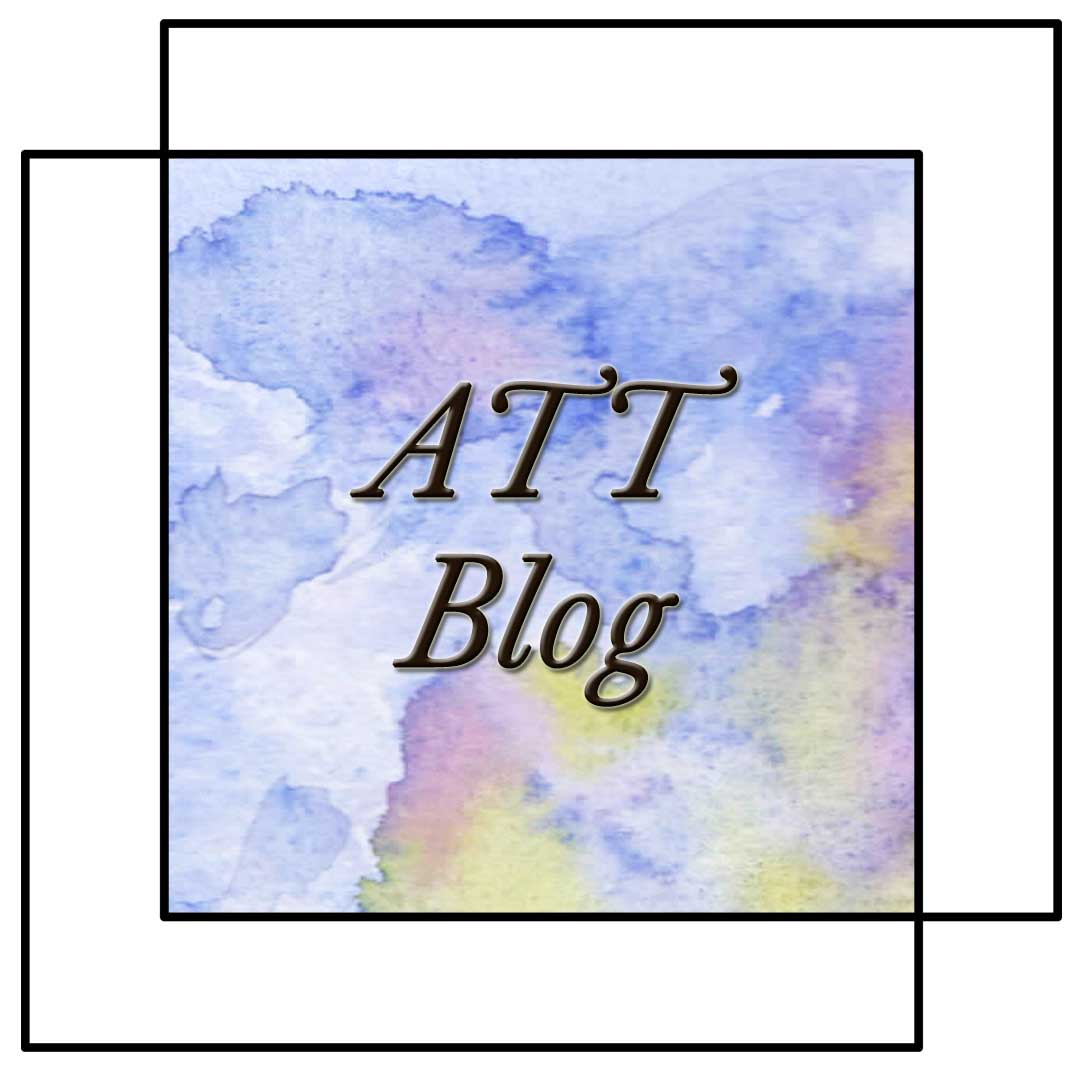
Skills Sharing Stories
I want there to be more arts and crafts in our world, in our communities and in our own lives. Hopefully you’ve this blog post useful and interesting in your creative journey.
So I’m creating, with your help, Art Trails Tasmania, allowing all of us who feel this love to create more of it.
And the Art Trails Tasmania blog is a key part of making this happen, telling the stories of members. It’s about what they have happening with workshops and classes, exhibitions, open studio trails, where to find their outlets, markets and fairs so you can shop their creations as well as their art and craft retreats.
Also being shared are the supporters of our artists, the galleries, shops, cafes, art societies and groups, places to stay and artist in residencies.
Why Time Management & Workflow are Creative Enablers Part 1
Time management empowers artists. Learn why workflow reduces overwhelm, builds clarity, protects creative energy & supports sustainable creative business success.
Why Feedback and Critique for Artists Are Vital for Growth – Part 1
Discover why art feedback and critique for artists accelerates growth, sharpens skills, and builds confidence in your creative practice.
Why Every Artist Needs a Facebook and Instagram Business Page – Part 1
Discover why every artist should have a Facebook and Instagram business page. Learn how Meta values business accounts, the benefits & how it works for you.
Why a Creative Business is Essential for Artists & Makers Part 1
Discover why building a creative business with multiple income streams is vital for artists & makers in this 2 part series. Learn how to grow & sustain your creativity.
How Open Studio Art Trails Help Artists Connect and Grow Part 1
Find out how Open Studio Art Trails can help grow your profile as an artist, open doors to new opportunities and to thrive creatively.
How a Blog Builds Your Creative Artist Profile and Income – Part 1
In part 1 in our series on how to make a blog grow your artist profile and income, we dive into what it is and how to get it working for you.
Why Every Artist and Creative Business Needs a Clear, Simple Content Plan – Part 1
In Part 1 in our series on Content Planning we explore why having a clear and simple content plan is so important for your growing creative business.
How to Make Art Exhibitions Creative, Engaging and Profitable Part 1
Successful art exhibitions can be game changers for artists, galleries and art societies, so dive into Part 1 of our guide on How to make your art show a success!
How to Make the Most of Entering Exhibitions Like the Incognito Art Show
Discover how to make the most of the opportunity of entering the Incognito Art Show so you can grow your Artist Profile, find new supporters and buyers and flourish!
How to Flourish Financially and Creatively with Markets and Fairs Part 1
In Part 1 of our series we look at how markets and fairs can be a great way to bring in money and grow creatively.

